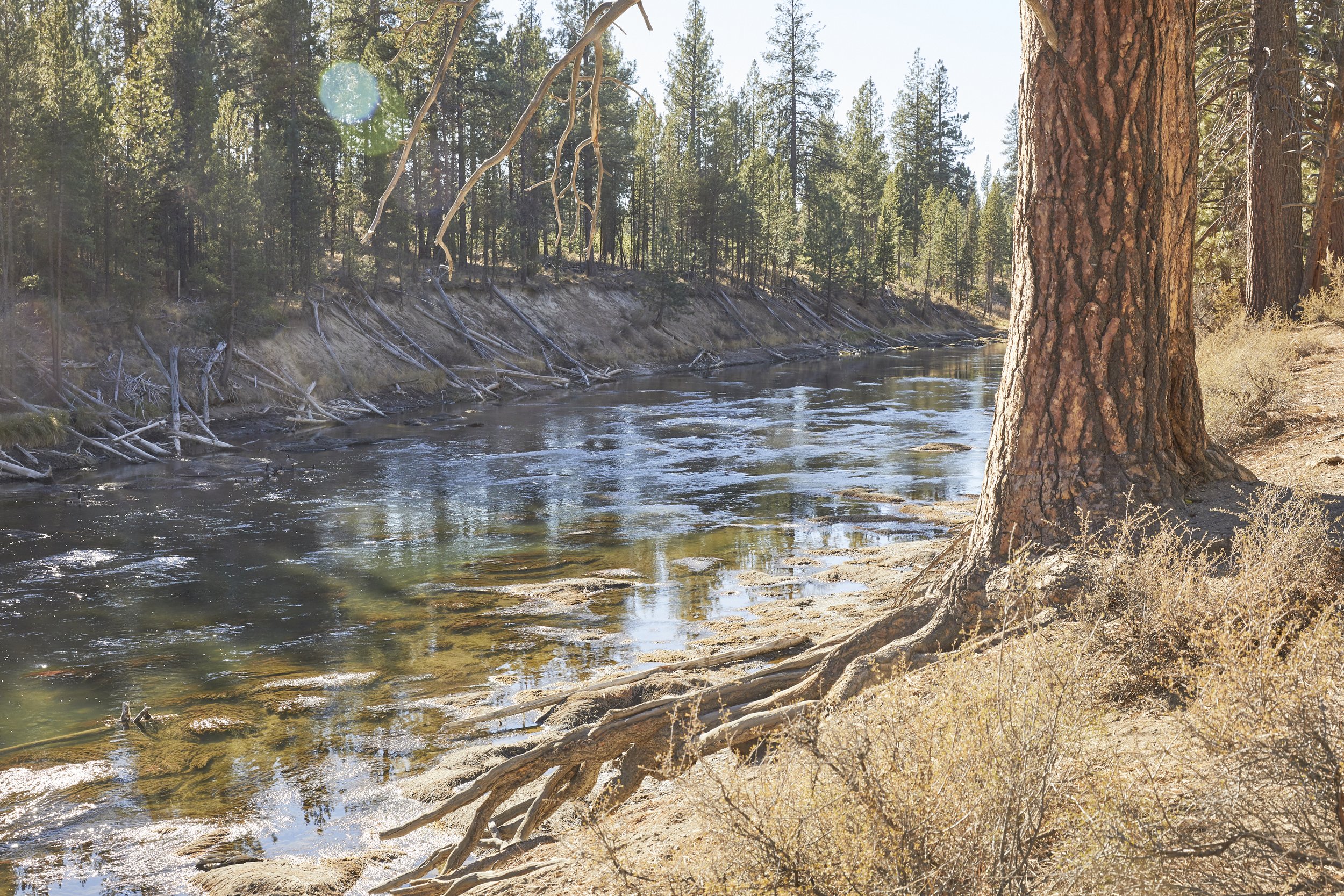A river ecosystem on the brink
The Oregon spotted frog is an indicator species in the Deschutes River Basin. Its presence along our rivers, wetlands, and lakes is a sign of a healthy ecosystem. On the other hand, when we lose this species from an area, it’s an indicator of an ecosystem in peril.
With the species gone from up to 90% of its former habitat–stretching from California to British Columbia– the Oregon spotted frog was listed on the Endangered Species List in 2014. Saving the spotted frog is all part of a larger effort to protect a functioning ecosystem along the Deschutes River.
What’s the biggest threat to the spotted frog?
Erosion along the banks of the Upper Deschutes: Paul Riedmiller
It’s the low flows in the river during the winter and high flows in the summer that have combined to degrade and fragment the frogs' habitat. When water for irrigation is held back in Wickiup Reservoir during the winter, the exposed banks dry out and the species loses the mudflats in which it lives. Then, in the summer, water is released from Wickiup for irrigation and the dried-out banks are quickly flooded by high flows, eroding the channel and further destroying habitat along the banks.
Over the last several decades, this back-and-forth of drying out and flooding the banks has caused significant erosion. Today, the Upper Deschutes River channel is on average 20% wider than it was before Wickiup Reservoir was constructed, disconnecting the river from its banks and important habitats adjacent to the main channel.
Repairing a river
In 2020, a Habitat Conservation Plan (HCP) was adopted to mitigate the effects that water withdrawals for irrigation are having on this endangered species. Unfortunately, the plan was woefully inadequate and did not provide conservation measures to stop the unraveling of the river channel, stream banks, and floodplains.
Here’s an example. Over the next decade, the HCP slowly increases winter flows to reach 400 cubic feet per second (cfs) by 2033. At the same time, U.S. Fish & Wildlife Service reports that the flows must be a minimum of 600 cfs to support the frog. It just doesn’t pencil.
Changes in the river flows alone are only one step to improve the frog's habitat; We also need to restore the river channel and banks to support the frog’s life cycle. Yet, the HCP does not outline how, where, or when this critically important restoration should occur.
Think of it this way. The Oregon spotted frog is an aquatic species that lives in water. If we don’t restore both the river flows and river bank habitats, we will not succeed in recovering the species.
A plan for recovery
We had hoped the Oregon Spotted Frog Recovery Plan from the U.S. Fish and Wildlife Service would fill in some of the HCP’s gaps and make real, measurable recommendations for habitat restoration.
A draft of the Recovery Plan was released in March of this year. Disappointingly, the draft does not provide the necessary information about where and what kind of restoration measures are needed to restore habitat.
That’s why the Recovery Plan needs to do more - we need specifics about what restoration projects are needed and where, when those projects will be implemented, and how we will measure whether restoration efforts are successful in recovering the species.
Take action for the Oregon spotted frog
The draft Recovery Plan for the Oregon spotted frog falls short. We are asking our supporters to submit a public comment calling for a stronger Recovery Plan that provides detail for species’ habitat needs.
The Recovery Plan is a key piece of the puzzle in restoring the Deschutes and its tributaries. We need to make sure it is effective in helping the frog - and the intricate web of interrelated species - survive and thrive in the Deschutes River Basin.
Find out more about the draft Recovery Plan from the U.S. Fish & Wildlife Service.
Every comment counts, so please speak up for this important indicator species!
Written comments are accepted through May 1, 2023. To send in comments on the draft Recovery Plan, email fw1ofwo@fws.gov and include “Draft Oregon Spotted Frog Recovery Plan Comments” in the subject line.
If you’d prefer to submit comments by mail, send to Jennifer O’Reilly, U.S. Fish and Wildlife Service, 2600 SE 98th Avenue, Ste. 100, Portland, OR 97266
Not sure what to write? Here are our key points
The Draft Recovery Plan should provide objective, measurable criteria for delisting the Oregon spotted frog.
The Draft Recovery Plan should incorporate site-specific management actions to recover the species, including how and where the plan will restore riverine and wetland habitat in the Upper Deschutes.
The Recovery plan should include a detailed timeline of when, where, and by whom restoration projects will be implemented, to ensure for efficient and timely restoration of the frog's habitat.







